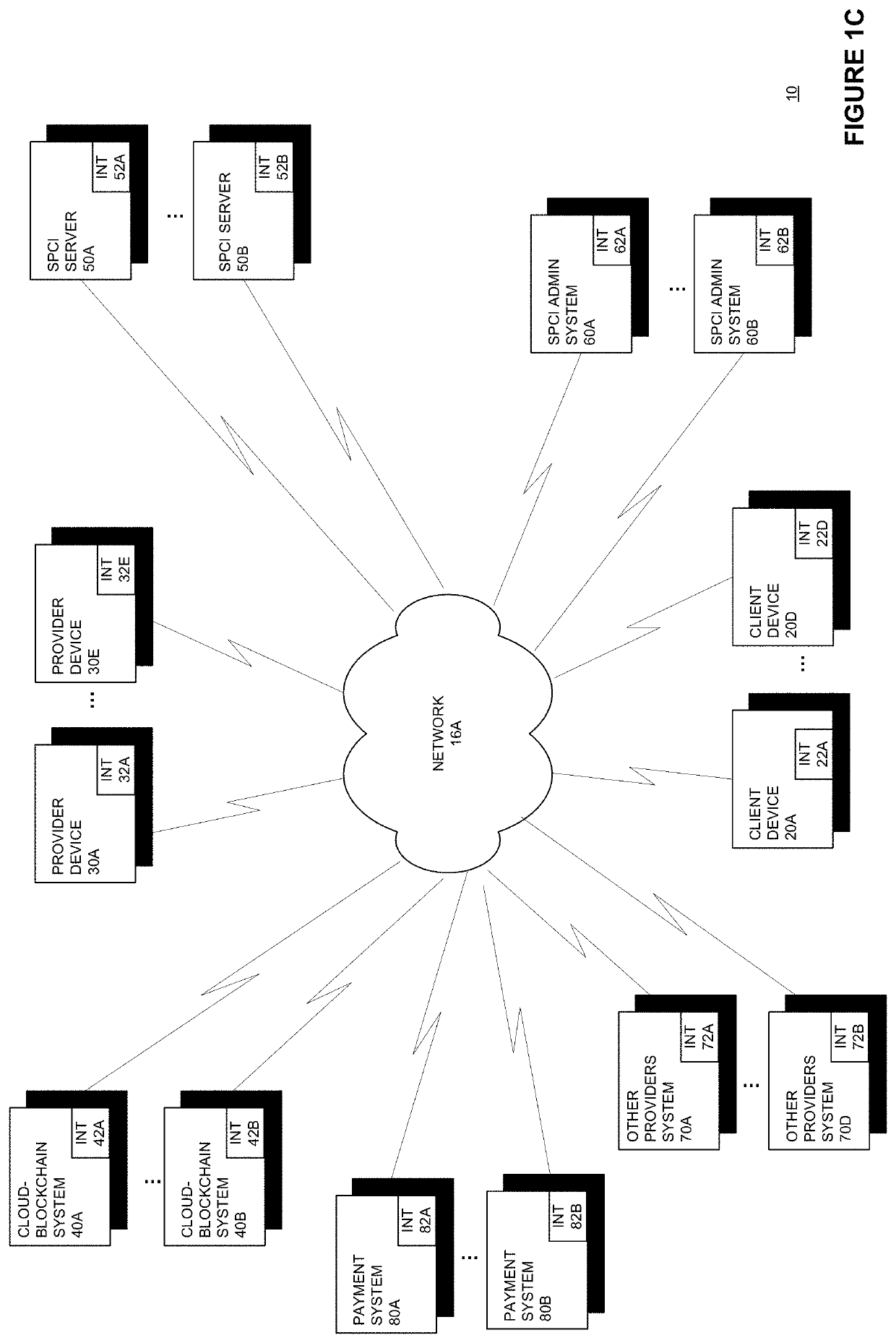Patient and service provider remote interaction system, method and apparatus
a technology for remote interaction and patient care, applied in the field of patient and service provider remote interaction system, method and apparatus, can solve the problems of inability to meet the needs of patients, inability to interact with dental service providers in a timely manner, time-consuming and expensive, etc., and achieve the effect of improving interactions
- Summary
- Abstract
- Description
- Claims
- Application Information
AI Technical Summary
Benefits of technology
Problems solved by technology
Method used
Image
Examples
Embodiment Construction
[0032]In accordance with some embodiments, a service provider-client interaction (SPCI) architecture (400, 420, 100C, 100D, 10) is provided that enables new and / or improved service provider and / or payee interactions with clients during many phases and types of services. In some embodiments, service providers such as dental care providers, medical care providers, and others may provide some or all of their services remotely, in-person, or via combination of remote and in-person interactions with one or more clients. To provide an example only, service providers that provide dental services, and clients (i.e. patients) seeking dental services, are described as one possible application of the SPCI architecture (400, 420, 10).
[0033]An exemplary environment in which such an embodiment may be implemented is illustrated in FIG. 1A. A client 21A may seek to receive guidance or aid (service) for a dental concern. The client 21A may be located at location 410A, such as the client's home or wo...
PUM
 Login to View More
Login to View More Abstract
Description
Claims
Application Information
 Login to View More
Login to View More - R&D
- Intellectual Property
- Life Sciences
- Materials
- Tech Scout
- Unparalleled Data Quality
- Higher Quality Content
- 60% Fewer Hallucinations
Browse by: Latest US Patents, China's latest patents, Technical Efficacy Thesaurus, Application Domain, Technology Topic, Popular Technical Reports.
© 2025 PatSnap. All rights reserved.Legal|Privacy policy|Modern Slavery Act Transparency Statement|Sitemap|About US| Contact US: help@patsnap.com



